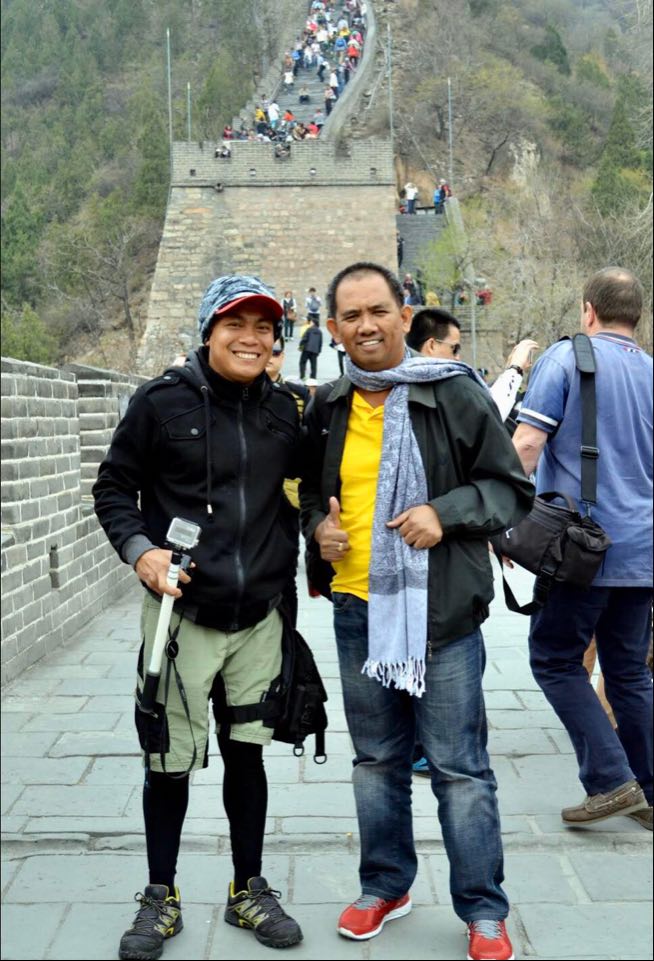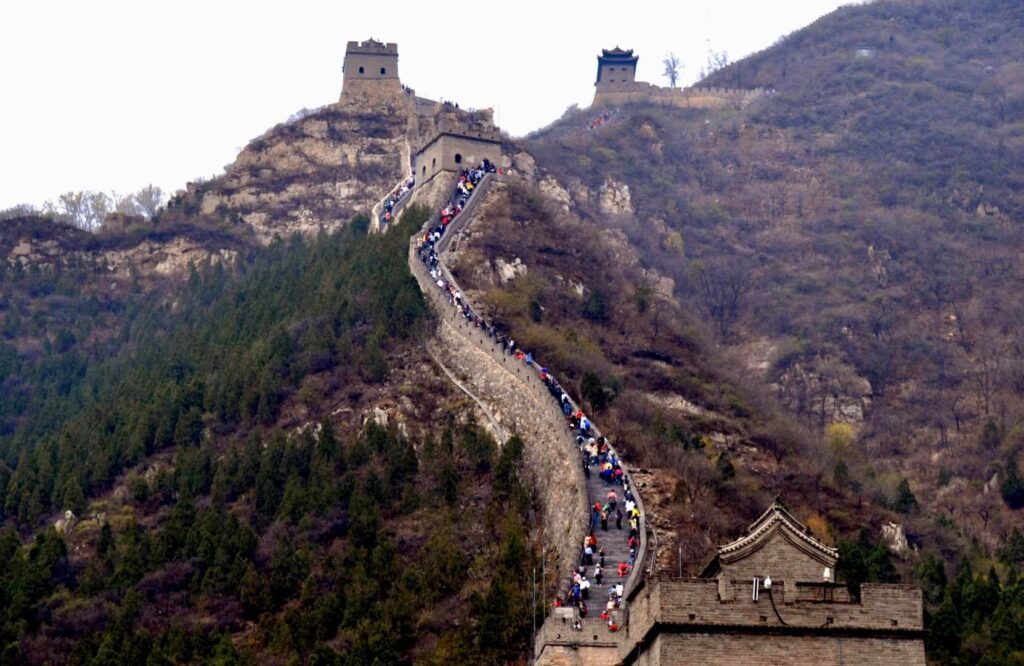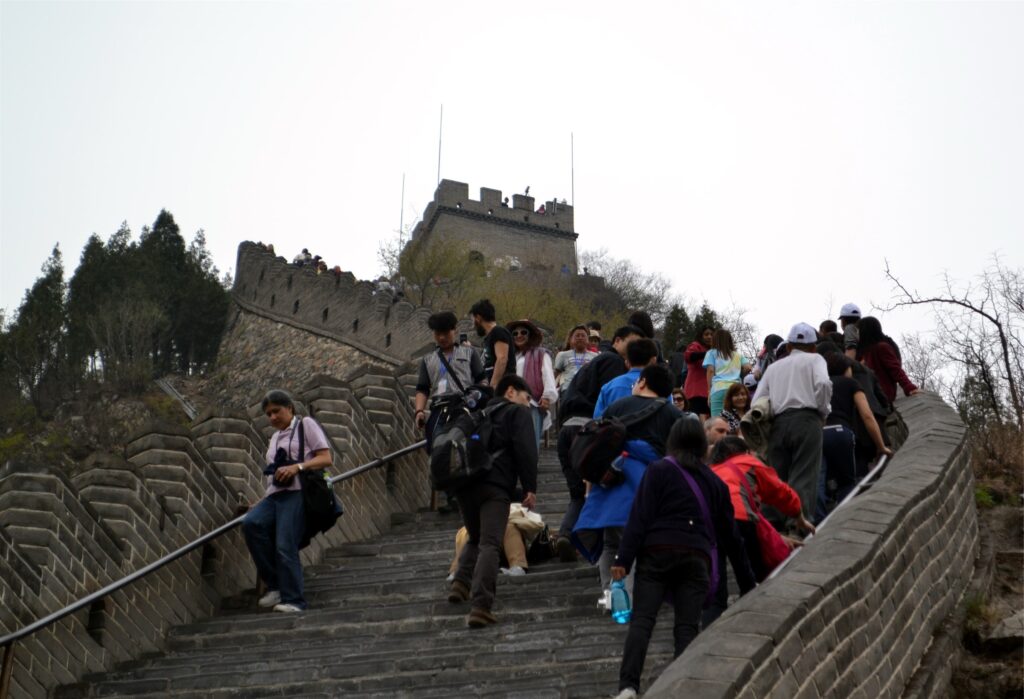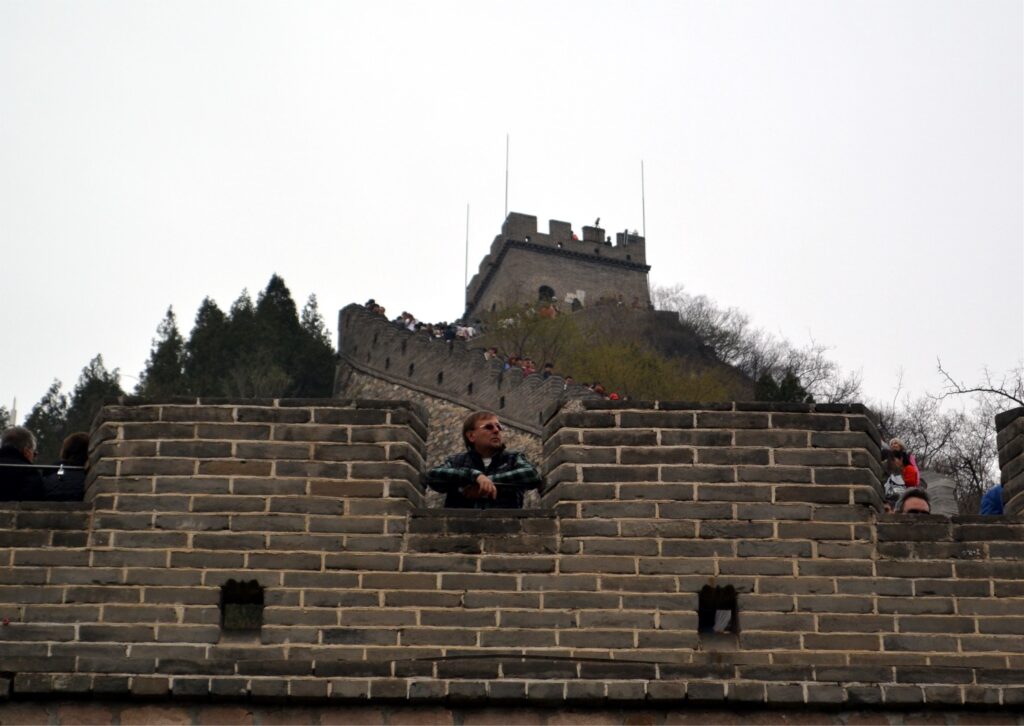Text and Photos by Henrylito D. Tacio
“The Great Wall reflects collision and exchanges between agricultural civilizations and nomadic civilizations in ancient China. It provides significant physical evidence of the far-sighted political strategic thinking and mighty military and national defense forces of central empires in ancient China, and is an outstanding example of the superb military architecture, technology and art of ancient China. It embodies unparalleled significance as the national symbol for safeguarding the security of the country and its people.”
That was what the United Nations Educational, Scientific and Cultural Organization (UNESCO) said when it has listed the Great Wall as a World Heritage in 1987. Just like a gigantic dragon, this one of the great wonders of the world winds up and down across deserts, grasslands, mountains and plateaus, stretching from east to west of China.
Recently, I had the opportunity of visiting this appealing attraction owing to its architectural grandeur and historical significance. The trip was part of the prize which I won in the 8th Bright Leaf Agriculture Journalism Awards last year.

No one really knows how long the Great Wall is but some said it is around 6,300 kilometers in length. Now, if you measure the length of all the different sections of wall, the distance is more like 22,000 kilometers. Go figure that out!
The wall relics mainly distribute in 15 provinces and regions, including Beijing, Tianjin, Hebei, Shanxi, Inner Mongolia, Liaoning, Jilin, Heilongjiang, Shandong, Henan, Shaanxi, Gansu, and Qinghai. There are 43,721 relics, including the walls, trenches, towers, and fortresses.
The Great Wall of China is perhaps the longest structure ever built by humans. The widest section of the wall is around 9 meters (30 feet). The highest point of the wall is around 8 meters (26 feet).
The labor force to build the Great Wall includes soldiers, forcibly recruited peasants, convicts and war prisoners. And it has been called the longest cemetery on Earth as over a million people died building the Wall. Some archaeologists have found human remains buried under parts of the wall.
According to our guide, there are three greatest mountain passes of the Great Wall. The first two are Jiayuguan Pass and Shanhaiguan Pass. Most of the leaders mentioned earlier visited the place via Badaling, in the northern part of the 18-kilometer long Guangou Valley, which is one of the two “sub-passes” of Juyongguan Pass. The one located in southern part of the valley is called Nan.

People scaling the Great Wall 
Climbing is easier said than done
It was at the Juyongguan Pass that we went to scale the Great Wall. This mountain pass is located in the Changping District and it is about 50 kilometers away from central Beijing. Travel time was more than hour because of heavy traffic.
When we arrived, there were already people going up. I looked up at the highest part of the Great Wall and assumed it was very steep. But I figured out that I can definitely climb it since I was able to scale Mount Apo, the country’s highest peak.
I was wrong. I was still young when I did climb Mount Apo; I was in my twenties. Now, it’s a different story. I am older and have gained a lot of weight. The words of Pam Wolf, the wife of my friend, Ben, came into my mind: “It can be a hard climb. I’m so glad we did it some years back. Not sure I would get as far now.”
Actually, it was a breeze at the lower part. It was just like walking in a park. People stop and take photos (selfies or in group). Then, it’s a long walk going to the peak. In the beginning, it might be alright but as you continue scaling the Great Wall through the stairs made of stone, you get a feeling of being dizzy.

Going up was not a problem but it was going down that made me think otherwise. I was almost at the top when I decided to go down. “Where are you going?” Mauricio Victa, a photojournalist, asked me.
“I won’t do it anymore,” I replied. But before we parted ways, he took some photos of me in that part of the Great Wall. It happened that Editha Antenor, a lifestyle writer, was also there. So we had a souvenir photo.
“The biggest building the astronauts could see from the space is the Great Wall, which looks very much like a black worm,” someone once said. So the question is: Is the Great Wall truly visible from the moon?
Yang Liwei, China’s first astronaut who was lifted into the outer space by the spacecraft Shenzhou V on Oct.15, 2003, gave a definite answer to a reporter after he reached the ground. He said: “No!”
The Scientific American, in its February 21, 2008 issue, reported: “… the wall is only visible from low orbit under a specific set of weather and lighting conditions. And many other structures that are less spectacular from an earthly vantage point — desert roads, for example — appear more prominent from an orbital perspective.”
Whether you can see it from the moon or not, the Great Wall is definitely magnificent!
As American President Barack Obama said when he visited the place in November 2009: “It’s majestic. It’s magical. It reminds you of the sweep of history, and that our time here on Earth is not that long, so we better make the best of it.”

